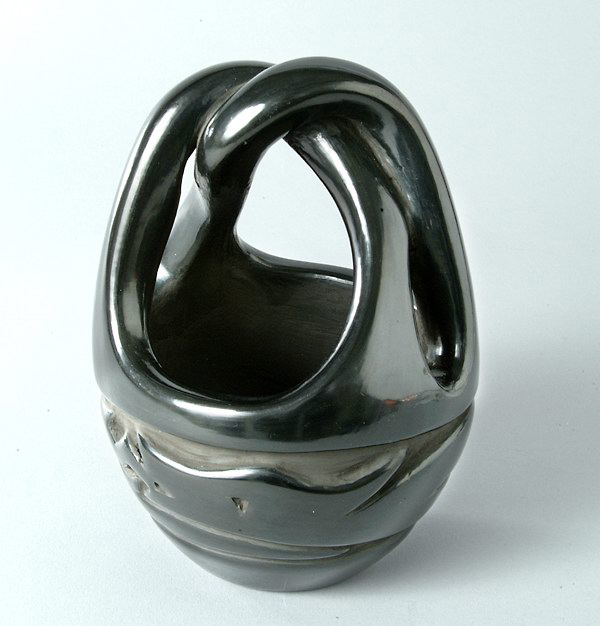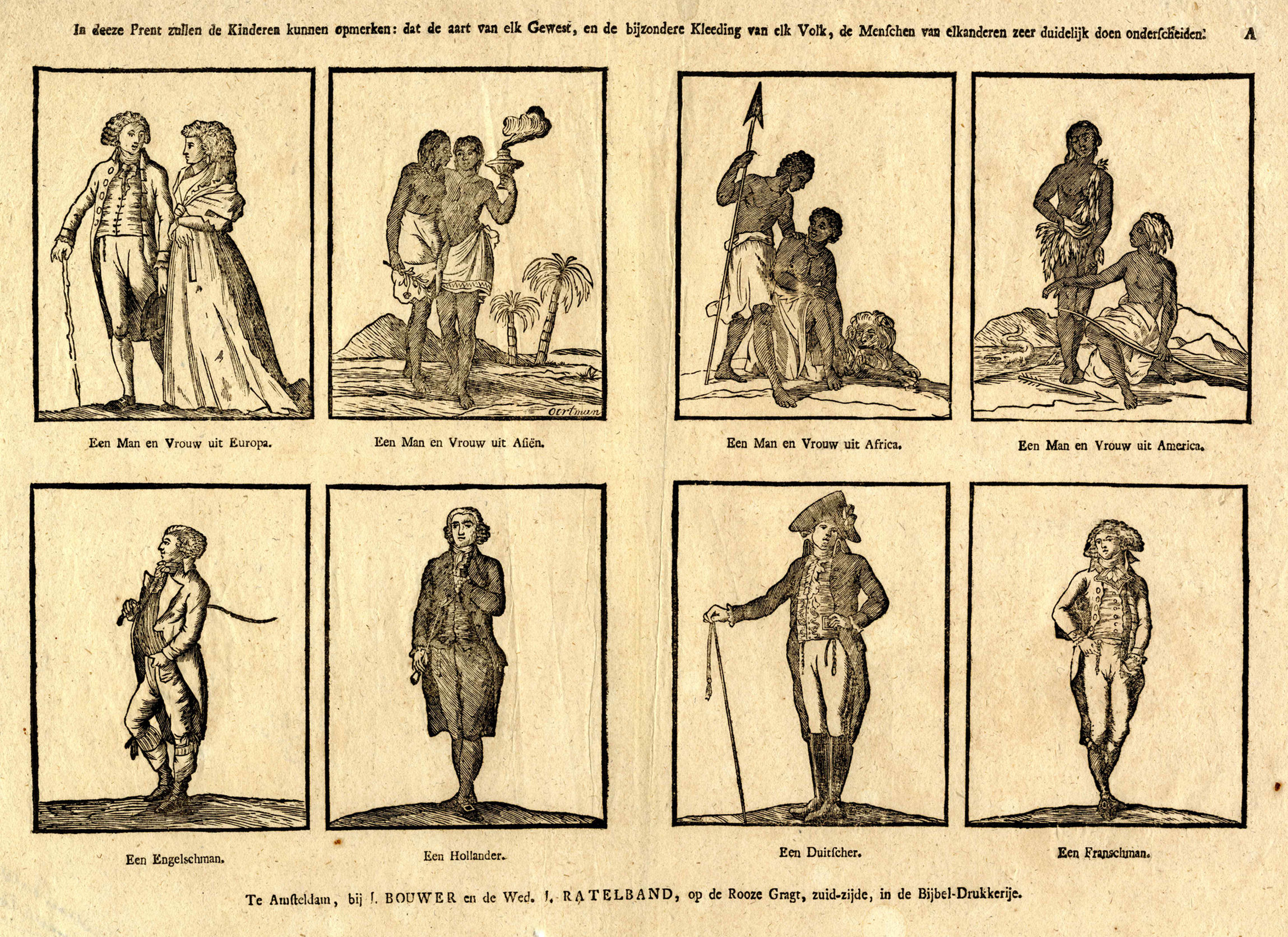|
Jason Garcia (artist)
Jason Garcia is a contemporary Native American artist in the United States, who was born in Santa Clara, New Mexico. His work has been exhibited the Smithsonian in Washington D.C, the Heard Museum in Phoenix, the Palm Springs Art Museum, and many more. He won the 2018 Mentor Fellowship Award under the Native Arts and Cultures Foundation amongst many others. He teaches many Native American children at summer programs and elementary schools about the art he creates and techniques he uses. Garcia documents the "ever-changing cultural landscape" of Santa Clara. He embodies traditional Pueblo techniques with contemporary imagery; combining native stories, ceremonies, and traditions with modern era constructions such as technology. His primary techniques are clay tiles and printmaking, including lithography, serigraphy, and etching. Early years Jason Garcia, also known as Okuu Pin, translating to "turtle mountain," is from the Santa Clara Pueblo Tewa tribe. His name is represent ... [...More Info...] [...Related Items...] OR: [Wikipedia] [Google] [Baidu] |
Santa Clara Pueblo, New Mexico
Santa Clara Pueblo (in Tewa: Khaʼpʼoe Ówîngeh ɑ̀ʔp’òː ʔówîŋgè ″Singing Water Village″, also known as ″Village of Wild Roses″ is a census-designated place (CDP) in Rio Arriba County, New Mexico, United States and a federally recognized tribe of Native American Pueblo people. The pueblo is a member of the Eight Northern Pueblos, and the people are from the Tewa ethnic group of Native Americans who speak the Rio Grande Tewa language. The pueblo is on the Rio Grande, between Ohkay Owingeh (formerly San Juan Pueblo) to the north and San Ildefonso Pueblo (P'ohwhóge Owingeh) to the south. Santa Clara Pueblo is famous for producing hand-crafted pottery, specifically blackware and redware with deep engravings. The pueblo is listed on the National Register of Historic Places. Geography Santa Clara Pueblo is located at (35.971124, -106.089111), approximately 1.5 miles south of Española on NM 30. According to the United States Census Bureau, the CDP ha ... [...More Info...] [...Related Items...] OR: [Wikipedia] [Google] [Baidu] |
Pablita Velarde
Pablita Velarde (September 19, 1918 – January 12, 2006) born Tse Tsan (Tewa: "Golden Dawn") was an American Pueblo artist and painter. Early life and education Velarde was born on Santa Clara Pueblo near Española, New Mexico on September 19, 1918. After the death of her mother, when Velarde was about five years old, she and two of her sisters were sent to St Catherine's Indian School in Santa Fe. At the age of fourteen, she was accepted to Dorothy Dunn's Santa Fe Studio School at the Santa Fe Indian School and was one of the first women students. There, she became an accomplished painter in the Dunn style, known as "flatstyle" painting. Concerned about the rapid changes in native lifestyles, she described the School's flat painting narrative style as "memory paintings" which could help preserve older ways of life. In her early classes she befriended artist Tonita Peña, who influenced her style. Work Velarde's early paintings were exclusively watercolors, but later in life ... [...More Info...] [...Related Items...] OR: [Wikipedia] [Google] [Baidu] |
Screenprints
Screen printing is a printing technique where a mesh is used to transfer ink (or dye) onto a substrate, except in areas made impermeable to the ink by a blocking stencil. A blade or squeegee is moved across the screen to fill the open mesh apertures with ink, and a reverse stroke then causes the screen to touch the substrate momentarily along a line of contact. This causes the ink to wet the substrate and be pulled out of the mesh apertures as the screen springs back after the blade has passed. One colour is printed at a time, so several screens can be used to produce a multi-coloured image or design. Traditionally, silk was used in the process. Currently, synthetic threads are commonly used in the screen printing process. The most popular mesh in general use is made of polyester. There are special-use mesh materials of nylon and stainless steel available to the screen-printer. There are also different types of mesh size which will determine the outcome and look of the fini ... [...More Info...] [...Related Items...] OR: [Wikipedia] [Google] [Baidu] |
Stereotype
In social psychology, a stereotype is a generalized belief about a particular category of people. It is an expectation that people might have about every person of a particular group. The type of expectation can vary; it can be, for example, an expectation about the group's personality, preferences, appearance or ability. Stereotypes are sometimes overgeneralized, inaccurate, and resistant to new information, but can sometimes be accurate. While such generalizations about groups of people may be useful when making quick decisions, they may be erroneous when applied to particular individuals and are among the reasons for prejudicial attitudes. Explicit stereotypes An explicit stereotype refers to stereotypes that one is aware that one holds, and is aware that one is using to judge people. If person ''A ''is making judgments about a ''particular'' person ''B'' from a group ''G'', and person ''A'' has an explicit stereotype for group ''G'', their decision bias can be partia ... [...More Info...] [...Related Items...] OR: [Wikipedia] [Google] [Baidu] |
Comic Book
A comic book, also called comicbook, comic magazine or (in the United Kingdom and Ireland) simply comic, is a publication that consists of comics art in the form of sequential juxtaposed panel (comics), panels that represent individual scenes. Panels are often accompanied by descriptive prose and written narrative, usually, dialogue contained in word balloons emblematic of the comics art form. "Comic Cuts" was a British comic published from 1890 to 1953. It was preceded by "Ally Sloper's Half Holiday" (1884) which is notable for its use of sequential cartoons to unfold narrative. These British comics existed alongside of the popular lurid "Penny dreadfuls" (such as "Spring-heeled Jack"), boys' "Story papers" and the humorous Punch (magazine) which was the first to use the term "cartoon" in its modern sense of a humorous drawing. The interweaving of drawings and the written word had been pioneered by, among others, William Blake (1757 - 1857) in works such as Blake's "The Desce ... [...More Info...] [...Related Items...] OR: [Wikipedia] [Google] [Baidu] |
University Of Wisconsin–Madison
A university () is an institution of higher (or tertiary) education and research which awards academic degrees in several academic disciplines. ''University'' is derived from the Latin phrase ''universitas magistrorum et scholarium'', which roughly means "community of teachers and scholars". Universities typically offer both undergraduate and postgraduate programs. The first universities in Europe were established by Catholic Church monks. The University of Bologna (), Italy, which was founded in 1088, is the first university in the sense of: *being a high degree-awarding institute. *using the word ''universitas'' (which was coined at its foundation). *having independence from the ecclesiastic schools and issuing secular as well as non-secular degrees (with teaching conducted by both clergy and non-clergy): grammar, rhetoric, logic, theology, canon law, notarial law.Hunt Janin: "The university in medieval life, 1179–1499", McFarland, 2008, , p. 55f.de Ridder-Symoens, H ... [...More Info...] [...Related Items...] OR: [Wikipedia] [Google] [Baidu] |
Master's Degree
A master's degree (from Latin ) is an academic degree awarded by universities or colleges upon completion of a course of study demonstrating mastery or a high-order overview of a specific field of study or area of professional practice. A master's degree normally requires previous study at the bachelor's degree, bachelor's level, either as a separate degree or as part of an integrated course. Within the area studied, master's graduates are expected to possess advanced knowledge of a specialized body of theoretical and applied topics; high order skills in analysis, [...More Info...] [...Related Items...] OR: [Wikipedia] [Google] [Baidu] |
Fine Art
In European academic traditions, fine art is developed primarily for aesthetics or creative expression, distinguishing it from decorative art or applied art, which also has to serve some practical function, such as pottery or most metalwork. In the aesthetic theories developed in the Italian Renaissance, the highest art was that which allowed the full expression and display of the artist's imagination, unrestricted by any of the practical considerations involved in, say, making and decorating a teapot. It was also considered important that making the artwork did not involve dividing the work between different individuals with specialized skills, as might be necessary with a piece of furniture, for example. Even within the fine arts, there was a hierarchy of genres based on the amount of creative imagination required, with history painting placed higher than still life. Historically, the five main fine arts were painting, sculpture, architecture, music, and poetry, with p ... [...More Info...] [...Related Items...] OR: [Wikipedia] [Google] [Baidu] |
Bachelor's Degree
A bachelor's degree (from Middle Latin ''baccalaureus'') or baccalaureate (from Modern Latin ''baccalaureatus'') is an undergraduate academic degree awarded by colleges and universities upon completion of a course of study lasting three to six years (depending on institution and academic discipline). The two most common bachelor's degrees are the Bachelor of Arts (BA) and the Bachelor of Science (BS or BSc). In some institutions and educational systems, certain bachelor's degrees can only be taken as graduate or postgraduate educations after a first degree has been completed, although more commonly the successful completion of a bachelor's degree is a prerequisite for further courses such as a master's or a doctorate. In countries with qualifications frameworks, bachelor's degrees are normally one of the major levels in the framework (sometimes two levels where non-honours and honours bachelor's degrees are considered separately). However, some qualifications titled bachel ... [...More Info...] [...Related Items...] OR: [Wikipedia] [Google] [Baidu] |
University Of New Mexico
The University of New Mexico (UNM; es, Universidad de Nuevo México) is a public research university in Albuquerque, New Mexico. Founded in 1889, it is the state's flagship academic institution and the largest by enrollment, with over 25,400 students in 2021. UNM comprises twelve colleges and schools, including the only law school in New Mexico. It offers 94 baccalaureate, 71 masters, and 37 doctoral degrees. The main campus spans in central Albuquerque, with branch campuses in Gallup, Los Alamos, Rio Rancho, Taos, and Los Lunas. UNM is classified among "R1: Doctoral Universities – Very high research activity", and spent over $243 million on research and development in 2021, ranking 103rd in the nation. UNM's NCAA Division I program ( FBS for football) offers 16 varsity sports; known as the Lobos, the teams compete in the Mountain West Conference and have won national championships in skiing and cross country running. The official school colors are cherry ... [...More Info...] [...Related Items...] OR: [Wikipedia] [Google] [Baidu] |
Etching
Etching is traditionally the process of using strong acid or mordant to cut into the unprotected parts of a metal surface to create a design in intaglio (incised) in the metal. In modern manufacturing, other chemicals may be used on other types of material. As a method of printmaking, it is, along with engraving, the most important technique for old master prints, and remains in wide use today. In a number of modern variants such as microfabrication etching and photochemical milling it is a crucial technique in much modern technology, including circuit boards. In traditional pure etching, a metal plate (usually of copper, zinc or steel) is covered with a waxy ground which is resistant to acid. The artist then scratches off the ground with a pointed etching needle where the artist wants a line to appear in the finished piece, exposing the bare metal. The échoppe, a tool with a slanted oval section, is also used for "swelling" lines. The plate is then dipped in a bath of ac ... [...More Info...] [...Related Items...] OR: [Wikipedia] [Google] [Baidu] |




.jpg)

.jpg)
